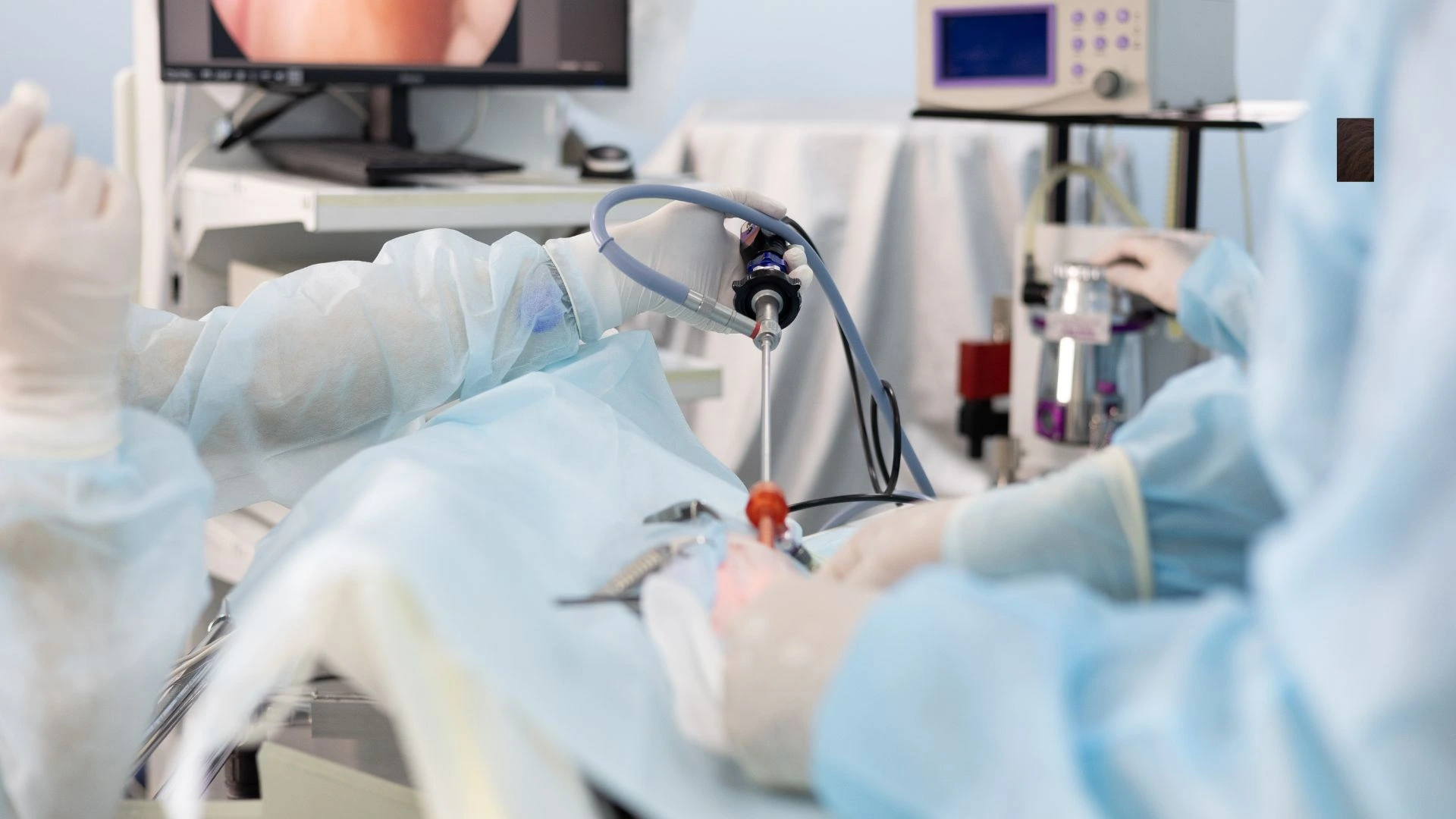Medical examination whereby the interior, especially in respect to diagnosis, is scrutinized. The interior is looked into using an endoscope; that is a long, thin, flexible tube provided with a camera at the top and is inserted through a body’s natural orifice- for example the mouth, nose, or anus. This camera takes a live feed enabling the physicians or medical experts to see various forms of trouble on organs, tissues, or body cavities.
This blog will explain what endoscopy is, the different types of endoscopy procedures, their benefits, potential risks, preparation required, and what patients can expect before, during, and after the procedure.
What is Endoscopy?
Endoscopy is a procedure where doctors can view areas within the body without the need for large incisions. The endoscope, which can be inserted through natural openings such as the mouth, anus, or urethra, is a thin, flexible tube with a camera and light source. This tool gives real-time images of the internal structures of the body, and doctors can then assess the state of the organs, tissues, and cavities.
This process is minimally invasive, eliminating other surgeries and in most scenarios even avoiding extensive processes that prolong hospital recovery periods besides taking greater risk exposures. Normally, most physicians would first offer endoscopy where conditions that bring discomfort without visible reason need proper checking, thereby making the accurate identification of illness across different areas possible.
When is Endoscopy Recommended?
The physician may refer the patient for endoscopy if they have specific symptoms or if the doctor wishes to confirm a specific diagnosis. Such symptoms could include inexplicable abdominal pain, difficulty in swallowing, persistent nausea, unexplained bleeding, and altered bowel habits, among others.
Endoscopy is also useful in follow-up examinations of some diseases, like inflammatory bowel disease (IBD) or gastrointestinal bleeding. In a few cases, endoscopies are done as a component of cancer screening or assessment of abnormalities observed on imaging tests, such as X-rays or CT scans.
Types of Endoscopy Procedures
There are different endoscopy procedures, each tailored to examine other parts of the body. It is determined based on the type of symptoms that you are experiencing or the condition for which your physician suspects. Now, let us discuss the common types of endoscopy below:
- Colonoscopy
A colonoscopy is performed to visualize the interior of the colon, also known as the large intestine, and the rectum. Most individuals are referred for a colonoscopy due to unexplained abdominal pain, chronic diarrhea, rectal bleeding, or changes in bowel movements. The procedure can be used for the screening of colon cancer for those over 50 years or in people who have a family history of colorectal cancer.
In this procedure, the doctor inserts through the rectum a long flexible tube with a camera called the endoscope. The doctor is able to look into the colon, and he might also take biopsy samples or even remove polyps during the process. Colonoscopy is the most effective technique for the detection of early manifestations of colorectal cancer, allowing for prompt intervention.
- Colposcopy
A colposcopy is an examination of the cervix, vagina, and vulva using a specialized microscope called a colposcope. It is usually done when an abnormal Pap smear or HPV test result indicates potential issues with the cervix, such as precancerous changes or infections. During the procedure, the doctor will apply a vinegar solution to the cervix and vagina to highlight any abnormal areas, which can then be biopsied for further analysis.
A colposcopy is not usually painful, but it may cause some discomfort, especially if a biopsy is taken. Regular colposcopies help monitor changes in the cervix and prevent the progression of cervical cancer.
- Cystoscopy
A cystoscopy is the observation of the inner bladder and the urethra. The particular endoscopy is recommended by a physician whenever a person finds blood in urine, recurring cases of urinary infections, pain associated with urinating, or anomalies seen in the bladder. It features a very small tube equipped with a camera referred to as the cystoscope to be introduced within the bladder, through the urethra.
This medical procedure, known as a cystoscopy, can diagnose such conditions as bladder infections, bladder cancer, or urinary stones and, in some cases, be used as a treatment: for example, to remove bladder stones or take tissue samples for biopsy.
- Gastroscopy
A gastroscopy refers to an esophagogastroduodenoscopy, abbreviated as EGD, or even an upper endoscopy and is used for the examination of the upper part of the gastrointestinal tract, which includes parts of the stomach, esophagus, and small intestine. It is therefore recommended for most people who come with symptoms that include difficulty in swallowing, undiagnosed nausea, vomiting, abdominal pain, or bleeding.
During this process, the doctor will pass the endoscope down the mouth and into the esophagus. The camera takes good pictures of the inner lining of the upper digestive tract, allowing the doctor to see conditions such as gastroesophageal reflux disease (GERD), peptic ulcers, or tumors. Sometimes, a biopsy can be taken for further study.
- Hysteroscopy
The examination of the inner part of the uterus is done by a hysteroscopy. It can be performed for women who experience abnormal uterine bleeding, pelvic pain, or infertility. Assessments that may involve this procedure include checking for uterine abnormalities like fibroids or polyps or investigating causes of repeated miscarriage.
The procedure takes the place of inserting a thin, flexible tube called a hysteroscope into the uterus through the vagina and cervix. The camera gives an immediate view of the uterine lining, and treatment can be performed at that time, such as removal of growths or correction of abnormalities, if needed.
Benefits of Endoscopy
Advantages of endoscopy over classic surgical procedures include:
- Minimally invasive: Since traditional surgery requires incisions, endoscopy needs only small ones or no incisions at all. This minimizes the risk of infection and ensures a quick recovery.
- Rapid Recovery: Due to this minimally invasive nature, most patients recover faster as compared to others who undergo more intense surgical procedures.
- Accurate Diagnosis: The endoscope equipped with cameras will allow doctors to have real-time views of the inside of the body, providing for those very detailed images that can lead to accurate diagnoses.
- Therapeutic Use: In addition to the diagnostic uses, endoscopy can also be useful in treating the disease. For example, during a colonoscopy, polyps can be removed, or during gastroscopy, an ulcer can be treated or biopsied.
- Less Painful: Endoscopies are generally less painful than traditional surgery; with local anesthesia or sedation, most endoscopic procedures can be performed on an outpatient basis.
Preparing for an Endoscopy
Preparation for an endoscopy varies depending upon the type of procedure you are undergoing. In general, this is what you can prepare for:
- Dietary Restrictions: For most endoscopies, you will be asked to fast for a certain period of time before the procedure. This ensures that the stomach or colon is empty, allowing for better visibility during the examination.
- Medications: Advise your doctor of any medications that you are presently on, and you might be advised to discontinue them or reduce the dosages of some, especially blood thinners.
- There would be sedation according to procedure; you are administered a form of sedation, which aids the ability to relax when required. Others are asked to remain awake or others given full anesthesia.
- Arrange Transportation: If you are to be sedated for the procedure, it is a good idea to arrange for someone to drive you home afterward, as the sedative may impair your ability to drive.
What to Expect During the Procedure
Most endoscopic procedures are done on an outpatient basis, so you can go home the same day. Here is a general idea of what to expect during the procedure:
Colonoscopy: You will lie on your side while the doctor inserts the endoscope through the rectum. The procedure usually lasts 30-60 minutes.
Gastroscopy: Lying down, an endoscope is placed inside the patient by entering it in his/her mouth. Numbing anesthetic injections to throat for better patient ease and convenience can be conducted.
Cystoscopy: Lying position on the side where a doctor goes with a cystoscope along your urethra, that one feels only moderate pain from slight pressure that remains while being gone with that endoscopy of an individual.
Colposcopy: You will lie on an exam table, similar to a pelvic exam, and the colposcope will be used to examine your cervix and vagina.
Your doctor will then have an opportunity to view the inside organs of each procedure through a video screen and can perform biopsies if necessary.
Recovery and Aftercare
Some minor side effects that might occur after an endoscopy include bloating, cramping, or a sore throat, if you underwent a gastroscopy. These usually resolve within hours to a day. If you were sedated, you should expect some recovery time from the anesthesia, and your doctor should provide you with instructions on what to do at home.
In case you undergo a colonoscopy procedure, your physician may require that you go back to normal dietary intake slowly; in some, like a cystoscopy or hysteroscopy, minor bleeding or leakage may be normal.
Risks of Endoscopy
Though endoscopy is generally a safe procedure, there are certain risks, which include:
- Infection
- Bleeding
- Perforation: An opening in the organ being observed
- Reaction to anaesthesia or sedation
Your doctor will discuss these risks with you before the procedure and will do everything possible to minimize any complications.
Conclusion
Endoscopy is an important diagnostic tool that provides a minimally invasive way to look inside the body. Whether it is digestive issues, bladder concerns, or gynecological problems, endoscopy is a very effective tool for diagnosis and treatment. Preparation is necessary, but the benefits far outweigh the risks, with quicker recovery time, fewer complications, and the ability to treat some conditions on the spot. Being aware of the two types of endoscopy, the process that takes place, and what to expect can make the test less intimidating to take with more confidence while further educating one about one’s health.


